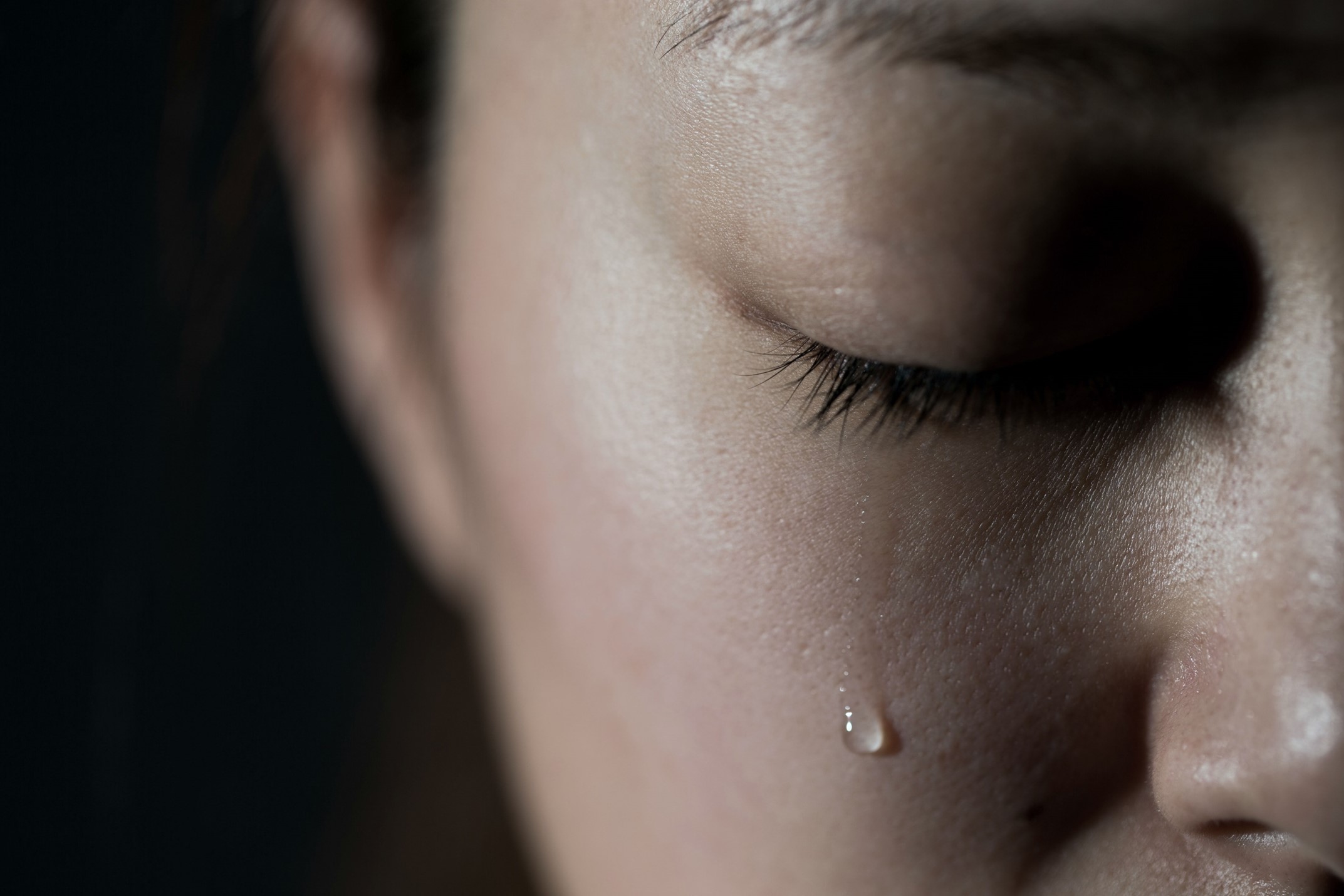
The 3 Types of Trauma and How They Impact You
Trauma comes in many forms—acute, chronic, and complex—each shaping how you see yourself and the world. Understanding the differences can help you take the first step toward healing



Dear friends,
If you grew up in a religious environment, Purity Culture – or even just the word, ‘pure’ – might be a phrase that makes the hairs on your arms tingle, the muscles in your chest tighten, your jaw clench, your blood become audible in your ears, and/or a host of other physiological responses. You might even have some choice words arise in your consciousness too. As I sit here, I can’t help but think about the invisible threads of purity culture that have woven themselves into the fabric of so many of our lives. It’s a tapestry both beautiful and painful, filled with good intentions and unintended consequences.
So I’ve decided to do a blog series on just this topic. Over the coming weeks (or less if I’m feeling rather ambitious), we’ll explore the many facets of purity culture, from its origins to its impact on individuals and communities. We’ll also discuss the journey towards healing and embracing a more holistic view of human sexuality and identity. This series aims to provide insight, support, and a path forward for those affected by the constraints of purity culture. Thank you for joining me, and I hope this series helps to heal the adolescent spirit within that just wanted to experience its own beautiful and messy life and restore in you a healthy relationship with your incredible body.
So friends, let’s get started, shall we?
What Is Purity Culture?
Purity culture is like a whisper that grew into a shout. It’s the idea that our worth, especially for young women, is intrinsically tied to our sexual purity. It’s the weight of a golden ring on a teenager’s finger, a promise made perhaps before they fully understood the implications. It’s the nervous flutter in a young heart, torn between natural desires and the fear of disappointing God, family, and community.
I remember my own experiences – the youth group talks where we were told to guard our hearts as fiercely as we guarded our bodies. The moments when it was impressed upon me that I was responsible for thoughts of the boys around me. Don’t wear that shirt. Don’t dance like that. Don’t even bounce when you lead worship for the movement of your breasts could cause a boy (or man) to sin in his heart. These messages, while meant to protect, often planted seeds of shame that would take years to uproot.
The Roots of a Movement
To understand purity culture, we need to look back. While forms of purity culture have existed as long as patriarchy has been the dominate social system, its modern incarnation took root in the fertile soil of the 1980s and 1990s, a time of change and uncertainty. The AIDS crisis cast a long shadow, and many conservative Christian groups saw abstinence as a beacon of hope and safety in a frightening world.
I think of my parents’ generation, watching the world change rapidly and wanting so desperately to protect their children. Books like “I Kissed Dating Goodbye” by Joshua Harris became guideposts, offering a clear path through the murky waters of adolescence. Purity balls emerged, where young girls pledged their virginity to their fathers – a practice that now makes many of us uncomfortable, but at the time seemed like a beautiful affirmation of family values.
The Evolution of an Idea
As purity culture gained momentum, it expanded beyond simple abstinence. It became a comprehensive worldview that touched every aspect of romantic and sexual expression. I recall the countless youth group sessions where we dissected every interaction with the opposite sex, analyzing whether a side hug was too intimate or if studying together might lead us astray.
The movement influenced sex education in schools and shaped public policy. Many of us sat through abstinence-only programs that left us more confused than informed. Thank goodness I had chosen to switch to a Catholic school where my science teacher believed in educating 13-year-olds about sex and sexuality (who knew!). But for many, they were given simplistic analogies for complex, but normal and healthy, developmental changes.
Core Beliefs and Values
At its heart, purity culture rests on several key beliefs:
I remember the weight of these beliefs. The constant vigilance required to maintain not just physical purity, but mental and emotional purity as well. The guilt that would wash over me for tending to my own biological needs (sshhh, don’t tell) or enjoying a sexy scene in a book! It was taxing to monitor thoughts and behaviors to such an extent (or hide them from view), and yet it felt so important, so necessary. And in our monitoring to avoid what shame might befall us from God or others, we shamed ourselves for something so normal and natural. We developed an internal voice that tried to keep us safe, but instead, left us with baggage that wasn’t ours to carry.
The Impact: A Complex Legacy
In my life, I’ve seen countless individuals grappling with purity culture and its aftermath. I’ve held space for the tears of those who feel broken because they didn’t wait until marriage. I’ve witnessed the struggle of couples who saved themselves for marriage only to find that intimacy doesn’t magically become easy once you say “I do.” I’ve felt the pain myself…the feeling I needed to hide my sexuality from my tight knit world to avoid its judgment and consternation. And I’ve even judged those who didn’t adhere to the purity standards – a fact I now deeply regret.
But I’ve also seen resilience – in myself and others. I’ve watched as people unlearn harmful beliefs and embrace healthier views of sexuality and relationships. I’ve seen the color return to their cheeks, their eyes lighten with the twinkle of youth, as they learn to love their body and all its functions. And I’ve seen them forgive themselves for hating the form that was always a treasure. It’s a journey that requires patience, self-compassion, and often, a good sense of humor.
Moving Forward with Grace
So where do we go from here? How do we honor the good intentions behind purity culture while healing from its harmful aspects?
As we navigate this journey, let’s be gentle with ourselves and others. Let’s acknowledge the complexity of human experiences and the many paths to love and fulfillment.
I’m reminded of a poem by Rumi: “Out beyond ideas of wrongdoing and rightdoing, there is a field. I’ll meet you there.”
Perhaps that’s where we’re headed – a place where we can shed the weight of impossible standards and embrace our full, messy, beautiful humanity.
For those interested in delving deeper into the history and impact of purity culture, here are some resources:
As we continue to unravel the threads of purity culture in our lives, may we do so with compassion – for ourselves, for those who taught us, and for those still finding their way. After all, we’re all on this journey together, learning and growing with each step. And if you do need that extra support, we’re just a call or email away. There’s a safe space waiting just for you.

Trauma comes in many forms—acute, chronic, and complex—each shaping how you see yourself and the world. Understanding the differences can help you take the first step toward healing

Do you second-guess yourself constantly, turning to others for reassurance? You’re not alone—but you can break free from self-doubt and start trusting your own wisdom. Here’s how.

Ever notice how political news and social media can leave you feeling physically sick, anxious, or completely drained? You’re not alone. While it’s normal to feel stressed about politics, there’s a point where that stress can become something more serious.

Resilience isn’t about being unshakeable or never feeling anxious – it’s about your ability to adapt and bounce back from challenges.

Have you ever shared a difficult experience only to hear “Just think positive!” or “Good vibes only!”? While these responses might seem supportive, they’re actually examples of toxic positivity. Real optimism isn’t about denying difficulties – it’s about acknowledging challenges while maintaining hope.

Have you ever heard someone respond to a friend’s genuine struggle with phrases like “Everything happens for a reason” or “Just focus on the positive”? While well-intentioned, these responses might actually be examples of spiritual bypassing.
Much like the lotus flower, the muddy waters of our wounds can be fertile ground for transformation.
Copyright © 2024 Soul In Motion Therapy & Coaching. All Rights Reserved | Site by La Dolce Video & Design